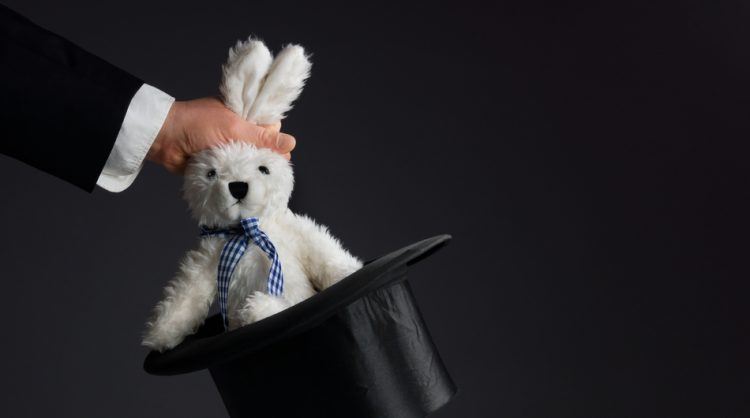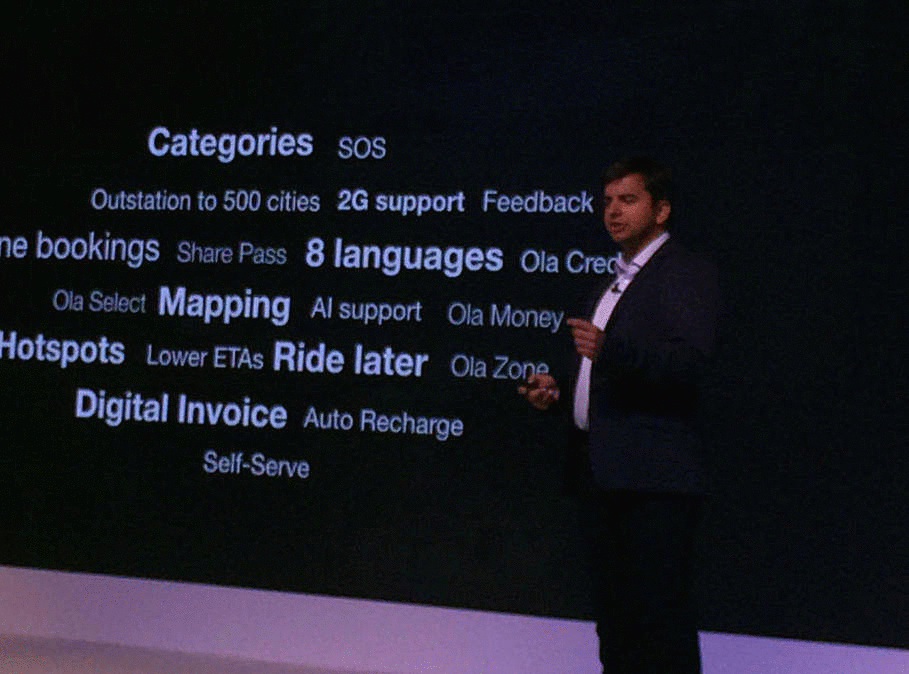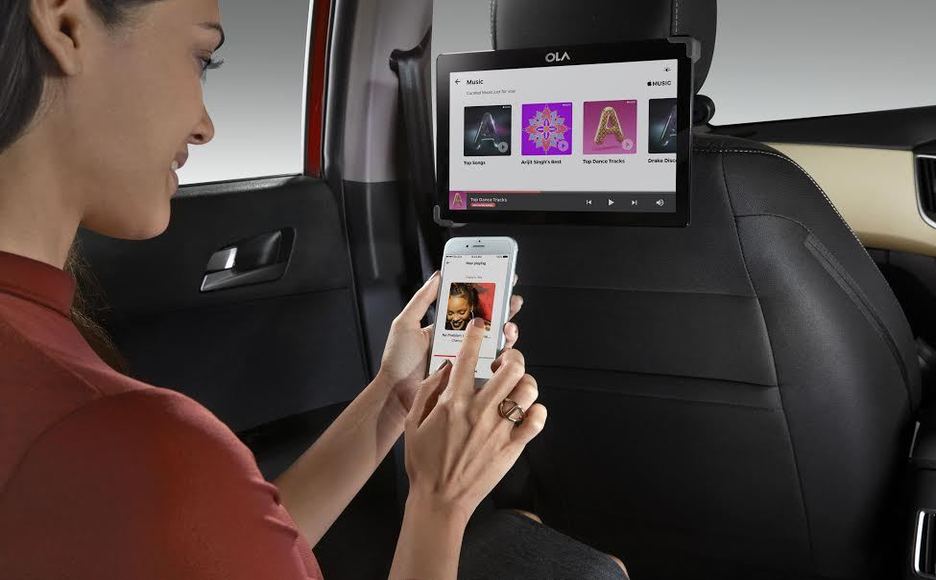
Photo credit : gutzemberg / 123RF.
Ride-hailing app Ola, the Indian rival to Uber, launched a massive upgrade to its in-cab entertainment plans on Tuesday – Ola Play. Think in-flight entertainment, complete with videos, music, and other paraphernalia, but for cab rides.
Passengers will be able to listen to songs, watch their favorite TV shows, get tourist recommendations, shop, and also tweak car settings such as air conditioning right from the Ola app, co-founder and CEO Bhavish Aggarwal said in a glitzy launch event in Bangalore.
The company is calling it “the world’s first connected car platform for ride-sharing.”
The promise and scope of what this could do for cab rides is phenomenal. Imagine being able to pass your time with great wifi, content, and other entertainment while you are stuck in India’s perennial traffic snarls. Ola developed the service for a year, and has even tied up with Apple Music, Sony, and other partners to make it work.
Going to office may actually turn to be an enjoyable experience for thousands of Indians.
The trouble, however, lies in the fine print.

Bhavish at the launch. Photo credit: Tech in Asia.
To begin with, Ola’s claim that this is the world’s first such innovation might be true technically, but Uber already has a similar proposition in play in the United States. Users can listen to music [a 10-minute playlist for a 10-minute ride], or news updates, or even order food if they want. On the face of it, the concept sounds the same, minus the glam quotient of Ola’s touch-screen hardware, and the added promises of tourist guide [a demo showed how trips in Mumbai will come with an in-app guide of Bollywood stars’ homes, but more on this in a bit], temperature control, or shopping.
When asked how Ola Play was different from what Uber has (Uber’s service is not available in India), Bhavish replied with a version of “but we are better.”
Then comes the question of availability. For now, Ola Play is available for higher end “Prime” cabs only for Ola Select customers in Bengaluru, Mumbai, and Delhi. Ola Select, for those who don’t know, is the company’s US$8.20-a-month membership service, where customers are promised better cab services (free wifi in all cabs, access to special events, and the assurance of riding with highly rated drivers).
See: Ola launches mystery loyalty program that’s largely MIA on its app
Bhavish did say all “Prime” cabs will get the entertainment systems within three months, even for those without Select membership. The service will be rolled out across other cities and to over 50,000 vehicles by March 2017.
Here’s the problem with that: This reporter signed up for Ola Select when it first launched, and was still subject to driver initiated cancellations, the biggest problem with all ride-hailing services. If that happens once too often, it essentially nullifies the entire proposition of the monthly membership.
“I think a lot of people will sign up with Ola only to try this [Ola Play] out,” Bhavish said while making his presentation.
It’s easy to see why he would think that. The promise of what Ola Play offers can truly be game-changing. But, an informal survey of about 20 regular Ola and Uber users in Bangalore tells us that while jazzy entertainment is tempting, most people would really rather get fewer cancellations, more cars, accurate GPS tracking, and have other hygiene factors in place before venturing into the world of in-car entertainment.

Ola Play. Photo credit : Ola.
Ola arranged for a demo of the new entertainment consoles in cars. While the media was encouraged to play around with the app, these were installed in company executives’ phones.
Ola Play is yet to roll out officially, [by this week, Bhavish said], so we were essentially checking out test units. The promising “tour guide” and shopping apps had not yet been integrated, and neither had the temperature control. So what we saw was basically an entertainment console that plays videos and music, even if that music is curated from Apple.
When Tech in Asia mentioned the principal question with all of this was whether it would work in real life, Bhavish was confident and jokingly talked about the desi mentality, referring to apprehension that cutting-edge technology won’t work with local infrastructure.
See: Why Ola can’t pull a Didi, buy Uber India, and be done with it
Now, Ola has been offering wifi services in its premium cars for some months now, but the returns [read: the eventual customer loyalty this is supposed to bring] from something this elaborate can only be counted over a long period of time, and only with seamless integration. We are talking about a country which performs worse than any Asian nation when it comes to internet speeds.
Ola, by the way, did not say what percentage of their users booked Prime cabs, so we don’t know what sort of influence it would have for the company’s loyalty base.
That raises the question of whether Ola’s big move, while commendable in itself, is really something the startup needed to spend money and resources on right now.
At last count, the company’s losses ballooned 20 times to US$116.3 million for the year ending March 2015. Revenue, in comparison, rose eight-fold.
Investor SoftBank recently cut valuation on Ola and Snapdeal, two of its largest startup investments in the country. [Bhavish said he wouldn’t comment on this].
This is at a time when Uber is going all out in India, leaving no stone unturned to gain a following.
Bhavish wouldn’t say how much the company invested in getting the Ola Play systems in place, but he did say there would be no price hikes for customers. This is bound to translate into a bigger burn, at least for the near term.
The CEO did say Ola would break even in two to three years, and there has been buzz around an imminent fund raise from Softbank.
Ola has no problem with funds – it already has enough to run till it hits profitability, Bhavish said. The question is, should that money be spent to give commuters access to in-cab shopping, and do passengers need that anyway?
This is an opinion piece.
This post Ola’s big “play” is futuristic, but gimmicky. Riders just want fewer cancellations appeared first on Tech in Asia.
from Tech in Asia https://www.techinasia.com/ola-play-for-cabs
via IFTTT
No comments:
Post a Comment